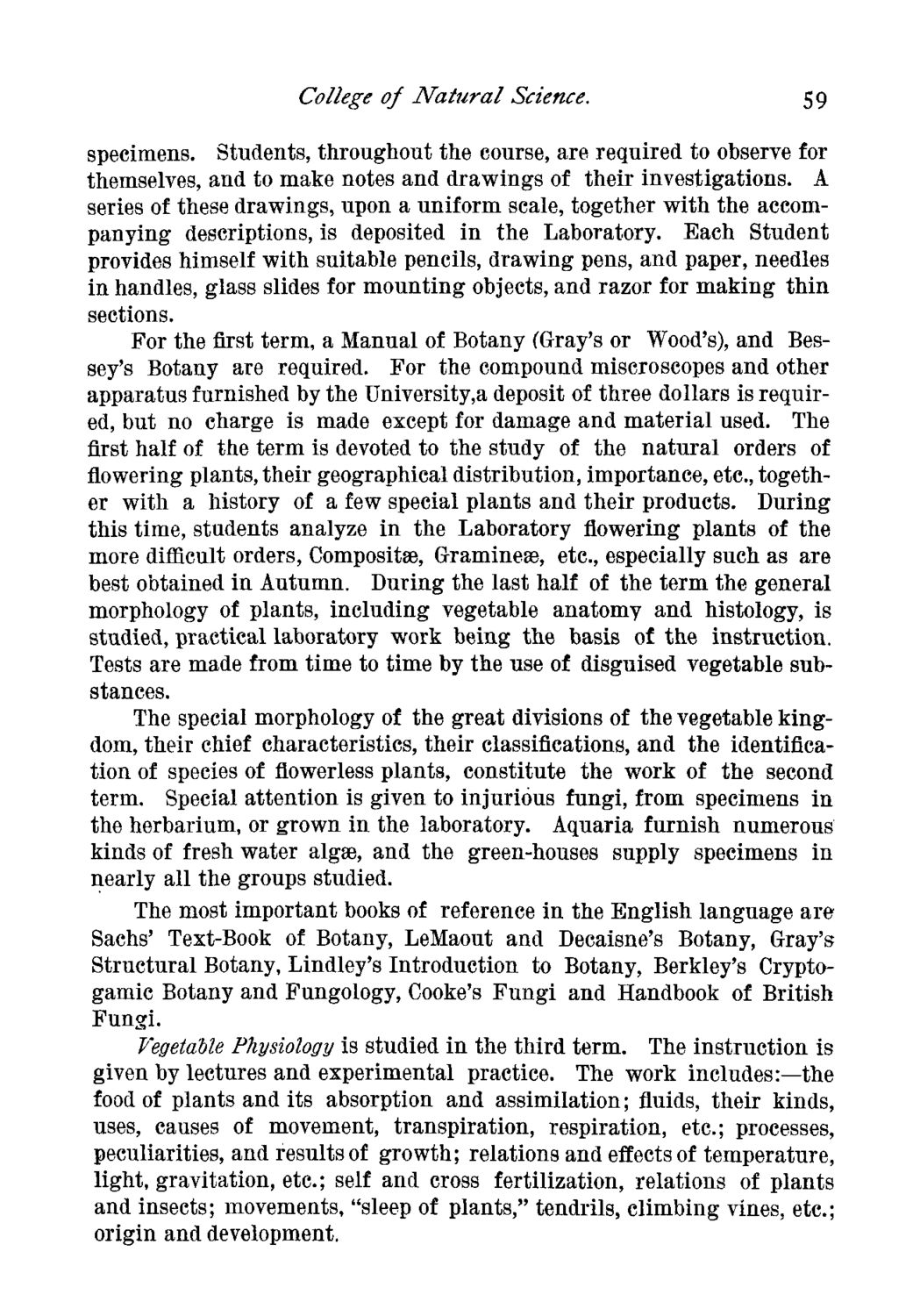| |
| |
Caption: Course Catalog - 1882-1883
This is a reduced-resolution page image for fast online browsing.

EXTRACTED TEXT FROM PAGE:
College of Natural Science. 59 specimens. Students, throughout the course, are required to observe for themselves, and to make notes and drawings of their investigations. A series of these drawings, upon a uniform scale, together with the accompanying descriptions, is deposited in the Laboratory. Each Student provides himself with suitable pencils, drawing pens, and paper, needles in handles, glass slides for mounting objects, and razor for making thin sections. For the first term, a Manual of Botany (Gray's or Wood's), and Bessey's Botany are required. For the compound miscroscopes and other apparatus furnished by the University,a deposit of three dollars is required, but no charge is made except for damage and material used. The first half of the term is devoted to the study of the natural orders of flowering plants, their geographical distribution, importance, etc., together with a history of a few special plants and their products. During this time, students analyze in the Laboratory flowering plants of the more difficult orders, Compositse, Gramineee, etc., especially such as are best obtained in Autumn. During the last half of the term the general morphology of plants, including vegetable anatomy and histology, is studied, practical laboratory work being the basis of the instruction. Tests are made from time to time by the use of disguised vegetable substances. The special morphology of the great divisions of the vegetable kingdom, their chief characteristics, their classifications, and the identification of species offlowerlessplants, constitute the work of the second term. Special attention is given to injurious fungi, from specimens in the herbarium, or grown in the laboratory. Aquaria furnish numerous kinds of fresh water algse, and the green-houses supply specimens in nearly all the groups studied. The most important books of reference in the English language are Sachs' Text-Book of Botany, LeMaout and Decaisne's Botany, Gray's Structural Botany, Lindley's Introduction to Botany, Berkley's Cryptogamic Botany and Fungology, Cooke's Fungi and Handbook of British Fungi. Vegetable Physiology is studied in the third term. The instruction is given by lectures and experimental practice. The work includes:—the food of plants and its absorption and assimilation; fluids, their kinds, uses, causes of movement, transpiration, respiration, etc.; processes, peculiarities, and results of growth; relations and effects of temperature, light, gravitation, etc.; self and cross fertilization, relations of plants and insects; movements, "sleep of plants," tendrils, climbing vines, etc.; origin and development.
| |